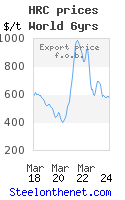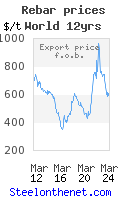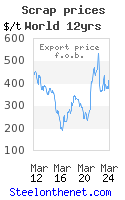CHARLESTON, W.Va. - Gov. Joe Manchin called for all coal companies in West Virginia to shut down for safety checks after two more mine workers were killed Wednesday in separate accidents.
While Manchin's call was voluntary, he also ordered mine inspections speeded up so that all 544 of the state's surface and underground mines are examined by regulators as soon as possible.
"We're going to check for unsafe conditions, and we're going to correct any unsafe conditions before we mine another lump of coal," Manchin said.
David Dye, acting U.S. assistant secretary of labor for mine safety and health, later urged coal mines nationwide to conduct safety and training sessions on Monday for workers at the beginning of each shift. He cited the recent upsurge in mine accidents.
"I am asking miners and management at every mine operation to do the right thing: take one hour out for safety's sake this Monday," Dye said in a statement.
Both deaths Wednesday occurred at mines in southwestern West Virginia, officials said. One miner was killed at an underground mine when a wall support popped loose. And a bulldozer operator died at a surface mine when the vehicle struck a gas line and sparked a fire.
The deaths brought to 16 the number of mining-related fatalities in West Virginia since Jan. 2.
Manchin said the safety checks would include reviewing mine conditions, safety checklists and designated escape routes.
The West Virginia Coal Association, whose members account for 80 percent of the state's coal production, said its members would heed the governor's request. Association President Bill Raney expected the safety checks would take a matter of hours, depending on the mine type and size.
"They were immediately complying," Raney said. West Virginia is the nation's second-largest coal producer, after Wyoming.
Names of the two mine workers who died Wednesday were not immediately released.
Caryn Gresham, a spokeswoman for the state Office of Miners' Health Safety and Training, said the underground miner was killed at Long Branch Energy's No. 18 Tunnel Mine in Boone County. He was pronounced dead at a hospital.
The bulldozer operator died at the Black Castle Surface Mine, also in Boone County, Gresham said. Black Castle is operated by Elk Run Coal Co., a subsidiary of Massey Energy Co. The death was the third at a Massey subsidiary in less than two weeks.
The fatalities followed the deaths of a dozen miners from carbon monoxide poisoning after a Jan. 2 explosion at International Coal Group Inc.'s Sago Mine. The explosion trapped the men hundreds of feet underground. The sole survivor, Randal McCloy Jr., is recovering in a rehabilitation hospital.
Less than three weeks after Sago, two miners died in a belt line fire at Massey's Aracoma Coal Alma No. 1 mine in Melville, about 180 miles away.
Manchin responded to those earlier tragedies by pushing a state mine-safety bill through the Legislature in a single day. Among other things, the bill requires coal companies to provide miners with emergency communicators and tracking devices, and to store extra air supplies underground.
West Virginia's congressional delegation followed up those efforts Wednesday, introducing similar federal legislation.
The Long Branch mine employs around 59 people, according to the federal Mine Safety and Health Administration. Eight workers were injured during the first nine months of 2005, more than 2 1/2 times the national average, according to MSHA figures.
Federal inspectors issued 50 citations against the mine last year, 19 of which were considered "significant and substantial."
Two employees were injured at the Black Castle during the first nine months of 2005, below the national average. The mine has about 186 workers.
blogger@steelonthenet.com



